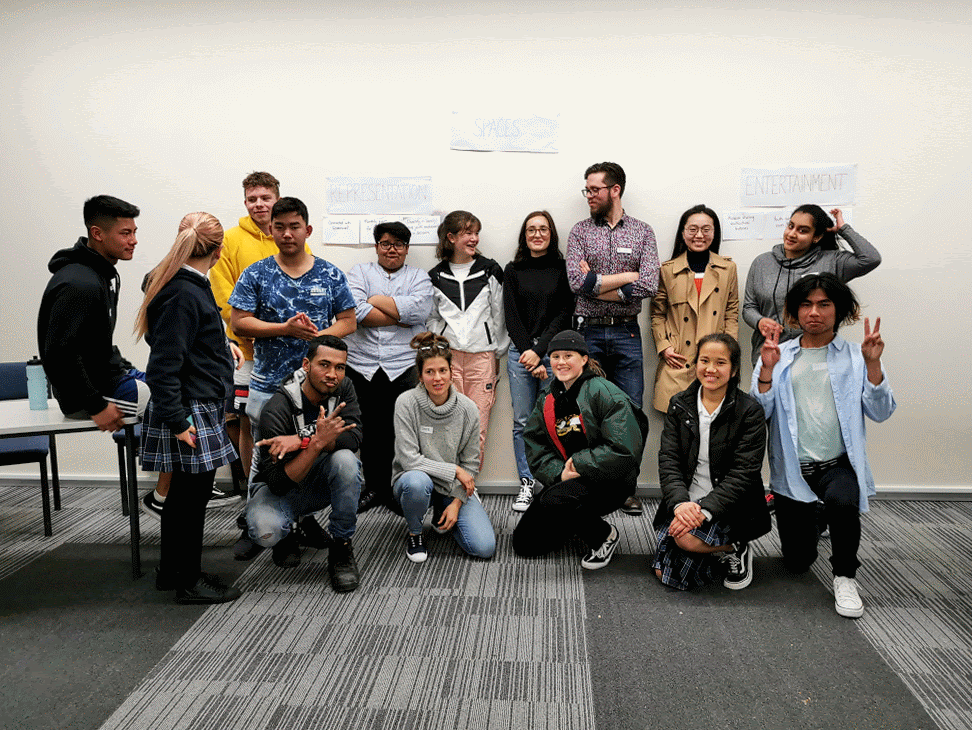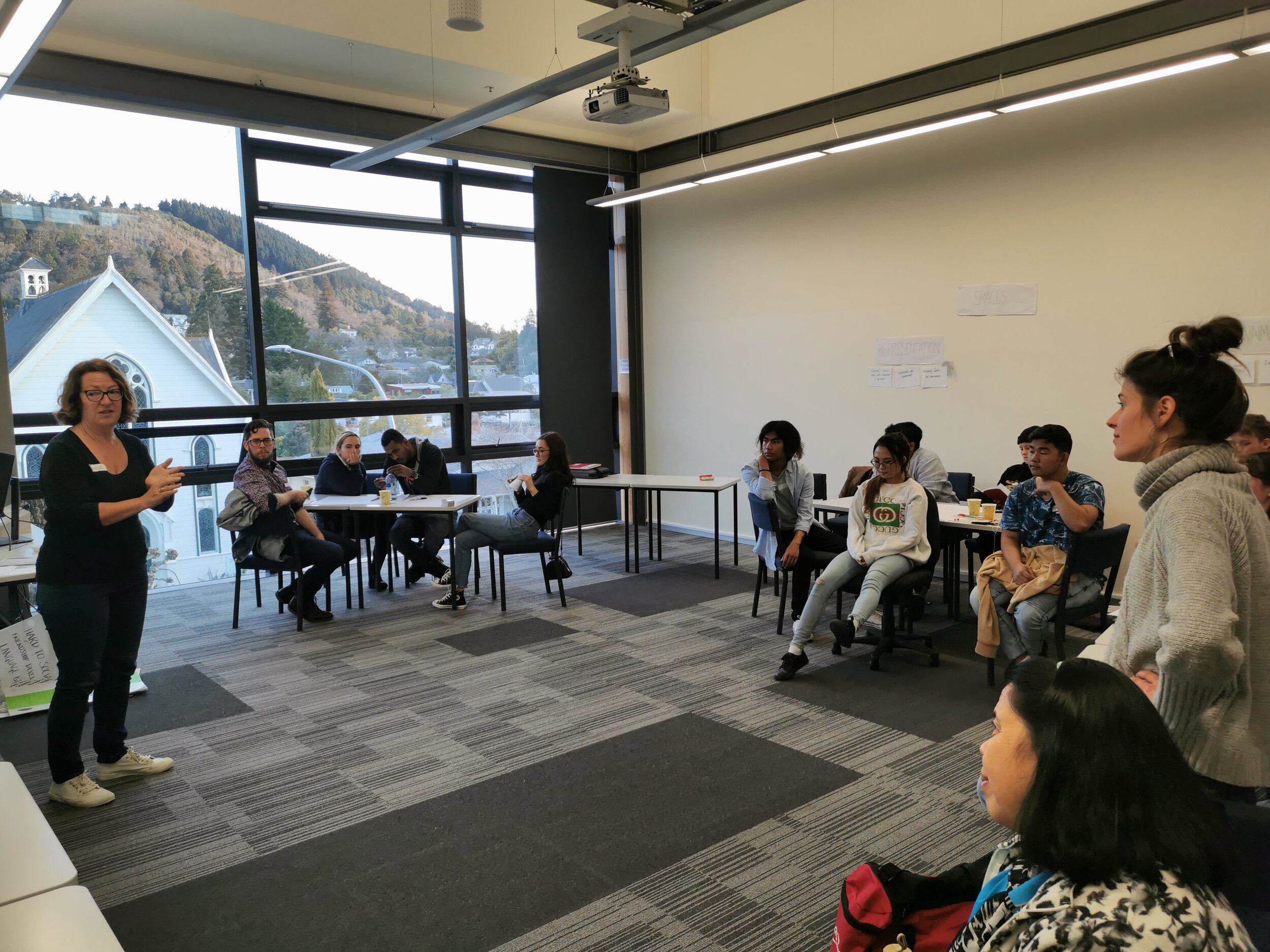The Brief from Multicultural Nelson Tasman
In mid 2019, Multicultural Nelson Tasman approached us asking for a proposal to help establish a new multicultural youth group.
“We have about 11 youth interested in forming a Multicultural Youth Group in town. Is there any chance you would be able to email me a quote for facilitating this group in developing a strong strategic plan/goals/foundation etc?”
“Time is of the essence as I need to get back to the Council this week for the funding application.”
Collaborating to increase the support
Before long, Nelson City Council confirmed funding for the group’s establishment. Multicultural Nelson Tasman invited us to pitch for the work against one other organisation. And that was none other than our friend and collaborator Kaye Latham from the Nelson Tasman Youth Workers Collective, who had herself teamed up with Sally Wood from Youth and Community Works.
We decided there must be a way we could work together.
Over coffee, we figured out that Sally could access some existing funding through Volunteer Nelson, which she thought could be redirected to this new group.
So we turned up to the meeting with the young people from Multicultural Nelson Tasman as partners instead of competitors.
Our approach
Starting with strengths and relationship-building
Our experience told us that the key to a successful youth group would be strong relationships. Yes, they needed a bold vision and some priorities to work on together. But first they needed to understand each other’s strengths and develop trusting working relationships.
So the first event focused on leadership, team-building and governance skills. It was an active and fun workshop facilitated by Sally Wood and four young leaders: Zen Stefani, Daniel Aston, Amy Harvey and Nicola Harvey. They did a fantastic job of highlighting the diverse skills of the young people in the room, and building their understanding of what it takes to lead and govern of a community group.
But it wasn’t all smooth sailing. There were some language barriers - and even with an interpreter in the room, it was tough to ensure everybody could participate and be heard.
Then working on their vision and priorities
Business Lab stepped in to facilitate the second and third workshops in collaboration with Kaye Latham from the Nelson Tasman Youth Workers Collective.
For the second workshop, we zoomed out a level. When working with groups, we often do some sort of “backcasting”. This is where you ask people to imagine they are in the future, looking back at what they have achieved. In this workshop, we asked:
“What’s your big bold dream for Nelson Tasman?”
We asked them to imagine the year was 2029 - 10 years from now. Their task was to create an Instagram story showing what the group had achieved in those 10 years. This sparked almost 30 ideas, with a couple of themes starting to emerge.
Before setting the foundations for ongoing leadership
The third and final event was about setting the group off with a strong direction and foundation.
But before then, we realised we needed to do some more work to narrow their focus. So we facilitated an extra meeting so they could review the ideas and identify themes. Very quickly, they decided on three themes. Education. Entertainment. Representation.
At the final event, we confirmed the vision and mission, and supported them to elect a new leadership team. With a strategic direction in place, now it’s time for the hard work to begin.
And by the looks of their new Facebook group, they are off to a flying start!
You can access a pdf version of the group’s shared agenda here.
Two key lessons from this project
Trust young people’s strengths
Recently a youth worker said to me:
“Young people don’t even know what they’re going to do when they leave school - let alone what changes we should make in our region for the next 50 years.”
Or there was this from a community board member:
“Why should we listen to young people when they can’t even keep their room clean?”
Our work with young people continually finds fault with that mindset. And this project was no exception.
For instance, we never told the young people how they should select a leadership group or what it should look like. Instead, we asked them to think about successful groups they had been involved in, and the roles that were valuable in those groups.
By starting from those strengths, they decided on four positions. Chairperson. Treasurer. Marketing and Communications. Secretary. And they decided to share each role between two people to minimise their workload.
Don’t expect things to go according to plan
This project reminded me of a blog post by Paul Thompson from the Upper Hutt Community Youth Trust who said:
From our experience the journey of having young people involved in the full process from start to finish is not easy. It’s hard. Things don’t always go to (our) plan. Things get missed, and get messy, but the outcome for the young people and our own learnings is just about always the best.
We (the adults) had a plan for this project. But there were several times where we wondered what was happening! In those situations where things feel like they are getting messy or out of control, there is only one good response. And that’s to go back to the young people you’re working with to work with them on the next steps.
That’s why we advocate for a lean approach to engagement. What do we mean by “lean”? Well, instead of spending days or weeks planning an engagement project, we use tools like the Engagement Canvas to set an overall strategy. And then we get out there and test that approach in the real world, adapting as we learn from feedback.
Engage young people in your organisation’s mission
Are children and young people important to your organisation’s efforts? If you want to shift from “delivering to” to “working with” young people - we can help. Whether that’s helping you to understand your strategy, training your staff in codesign or facilitating an engagement programme.







